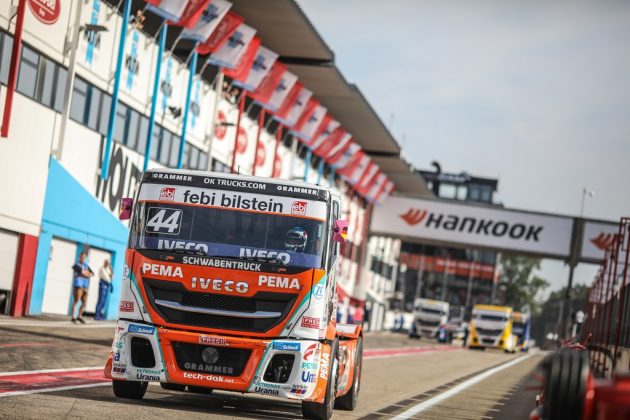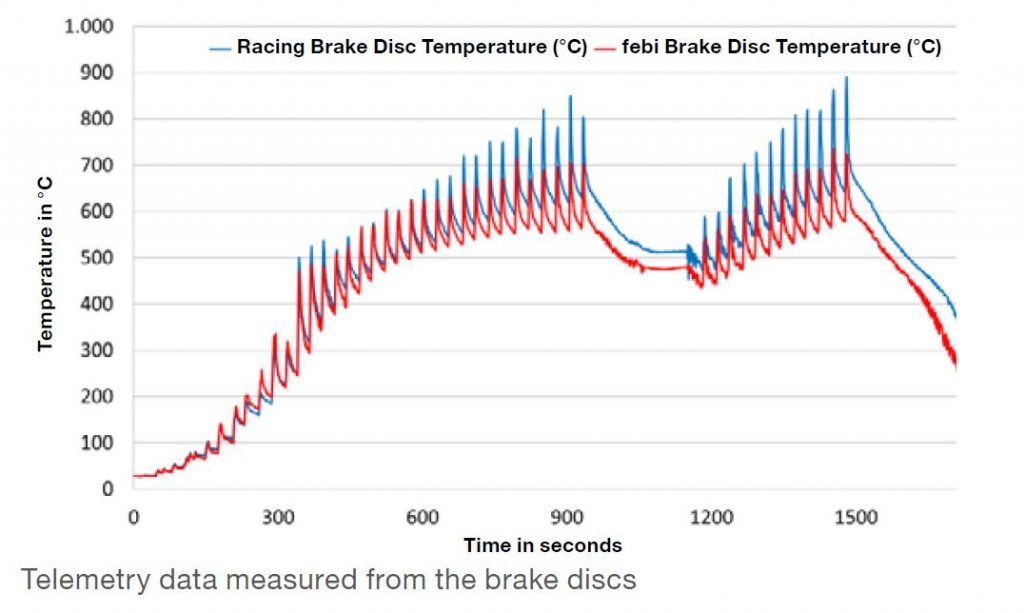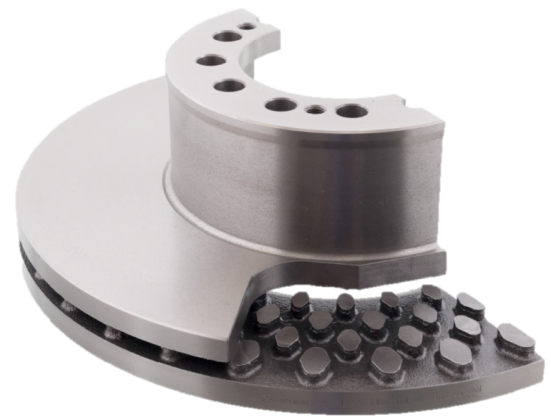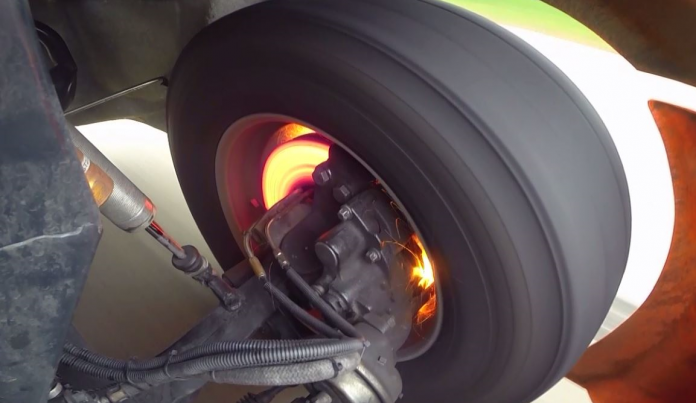In an emergency, every centimeter matters when braking. The quality of all brake parts installed in the vehicle is correspondingly important. To find out how resilient febi brake discs really are, we subjected them to the ultimate endurance test.
Using a commercial vehicle testing track, the commercial vehicle brake disc febi 12731 was installed in the race truck of Team Schwabentruck, which is sponsored by febi. The exceptional thing: brake discs intended for regular road traffic are not normally designed for the racetrack and the extreme demands associated with it.
Ultimate Endurance test for Brake Discs
With 1,150 hp and 5,000 Nm of torque, the brake discs of the 5.5-ton racing machine were pushed to the limits of their load-bearing capacity – and heated to nearly 900 degrees Celsius at their peak.

During heavy and repeated braking maneuvers, the temperature of the brake disc is a critical factor. This is because, during braking, the kinetic energy of the vehicle is converted into thermal energy through friction. If the brake disc becomes too hot, heat cracks can form and, in extreme cases, it can break. In order to keep the brake discs at a tolerable temperature level despite this, they are normally water-cooled during racing. Water is sprayed through nozzles from the hub side into the internal ventilation ducts as required. During the load test, the water cooling was switched off.
Temperatures of 890 °C
For the test, a new brake disc, which had been used in races up until then, was mounted on the left front wheel and the febi 12731 brake disc was mounted on the right front wheel. During the test, the temperatures of the brake discs were measured with infrared sensors and recorded with telemetry software. The recorded data is displayed in the diagram. The braking processes can be recognized as vertical deflections. Maximum temperatures of 890 °C were measured, which was also indicated by bright glowing.

Throughout the entire test, the febi brake disc remained 40 °C cooler on average than the racing brake disc. Even at the maximum thermal load of 890 °C for the racing brake disc, the febi brake disc measured in at a temperature of only 735 °C.
This temperature difference of 155 °C is of enormous importance for the high loads of a truck race and can be the difference between victory and defeat. If a brake disc fractures during the race, a pit stop is inevitable and the chance of one of the front places is lost. That is why, ever since this test, the truck racing professionals Steffi Halm and Gerd Körber have been confident that they can rely on febi‘s standard brake disc, which has proven itself under even the toughest racing conditions.
The Making of a Good Brake Disc
Three factors are responsible for the load capacity of a brake disc: the material, the material thickness, and the design of the internal ventilation. The material that is generally used is cast iron with lamellar graphite. Carbon, as well as silicon and other components such as manganese, chromium, and nickel, are also responsible for certain properties. Depending on the composition, elongation/ductility and tensile strength/hardness differ significantly.
The material thickness of the friction surfaces is decisive for their ability both to absorb and release energy. The thicker the solid material of the friction surfaces, the smaller the temperature fluctuations all while the temperature resistance increases.
What works here works 50x on the road!
Steffi Halm
The design of the internal ventilation pillars has a significant influence on the cooling of the brake disc. The maximum possible surface area improves heat dissipation. However, they also absorb compressive forces as soon as the brake pads grip. If the pillars are too small or improperly arranged, stresses and cracks can quickly form.

The excellent temperature behavior of the febi brake disc can be attributed to the special material and design. The thickness of the friction rings, together with the optimal design of the cooling channels, allows for high operating temperatures without the formation of cracks. In racing conditions, this provides a longer service life and greater reliability. The febi brake disc has been fulfilling the expectations at every race weekend for several years now and has played a role in the success of Team Schwabentruck.
Although febi brake discs are made for the road, they are also effective on the racetrack. Or as Team Schwabentruck driver Steffi Halm says, “What works here, works 50 times for the road!”




